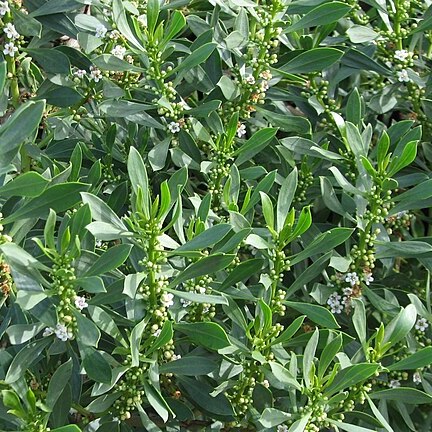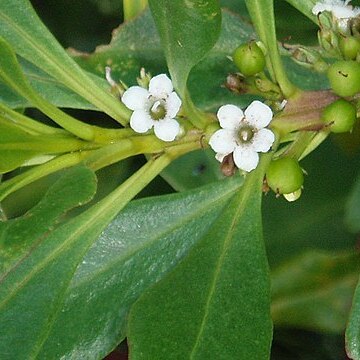A tall shrub or small rounded tree. It grows 3-4 m high. It spreads 3-6 m wide. The stems are warty. The leaves are fleshy and sword shaped. They are 3-10 cm long by 2 cm wide. They are broadest near the tip. There can also be small teeth near the tip. The leaves have oil gland as dots over them. The flowers are bell-shaped and white. They are 1 cm across and have purple spots. There are 5 spreading lobes. Flowers occur as 3-8 together in the axils of leaves. They are on stalks 1 cm long. The fruit are succulent and round. They are 1 cm long and greenish-purple when ripe.



